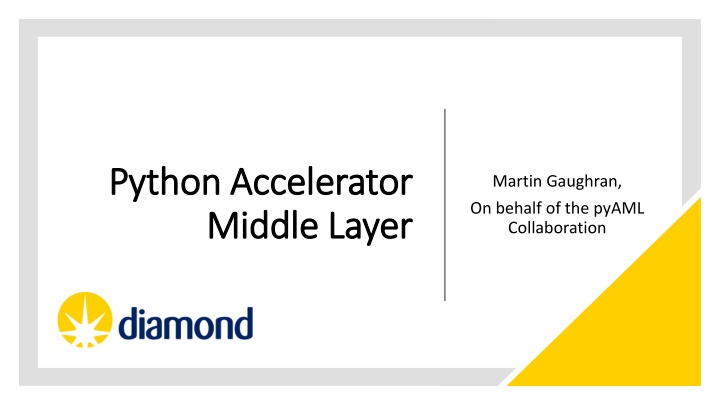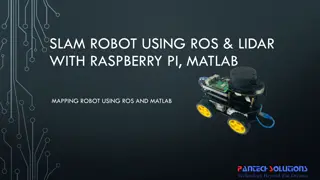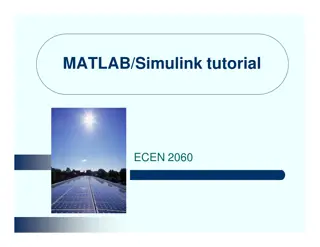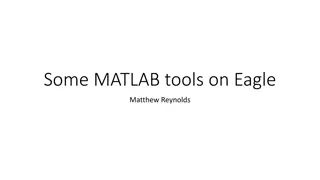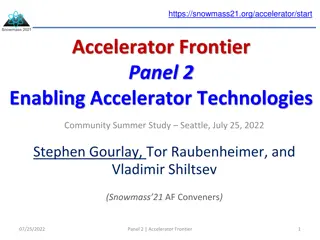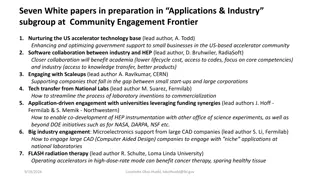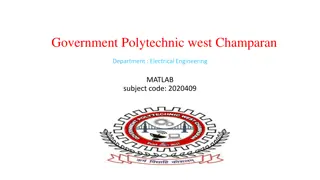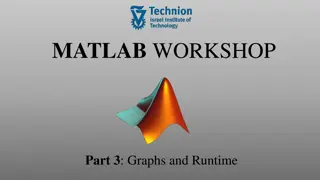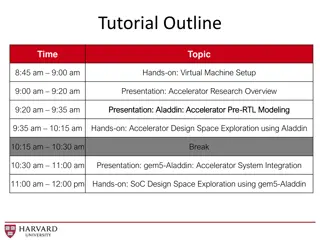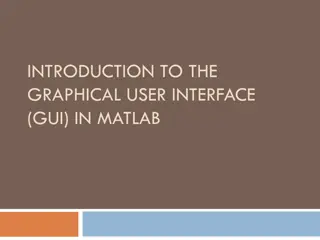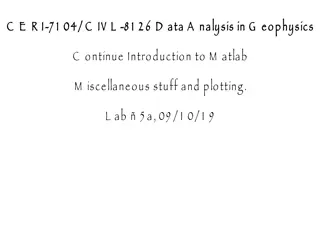Accelerator Middle Layer Comparison: Python vs. Matlab
In this comparison, the Python Accelerator Middle Layer (pyAML) project is evaluated against Matlab's Middle Layer (MML). MML, developed in the 90s, faces challenges due to proprietary constraints and potential obsolescence. On the other hand, pyAML offers improvements such as being accelerator & control-system agnostic, robust suite of applications, and integration with modern technologies like AI/ML. The pyAML project has garnered interest with dedicated workshops involving accelerator physicists, controls engineers, and software developers from various facilities.
Download Presentation

Please find below an Image/Link to download the presentation.
The content on the website is provided AS IS for your information and personal use only. It may not be sold, licensed, or shared on other websites without obtaining consent from the author.If you encounter any issues during the download, it is possible that the publisher has removed the file from their server.
You are allowed to download the files provided on this website for personal or commercial use, subject to the condition that they are used lawfully. All files are the property of their respective owners.
The content on the website is provided AS IS for your information and personal use only. It may not be sold, licensed, or shared on other websites without obtaining consent from the author.
E N D
Presentation Transcript
Python Accelerator Python Accelerator Middle Layer Middle Layer Martin Gaughran, On behalf of the pyAML Collaboration
Matlab Middle Layer (MML) Developed in the 90s, originally by SLAC and ALS Sits between high-level accelerator applications and the low-level control system (e.g. EPICS) Accelerator and control system-agnostic Large suite of (well-tested) measurements and high-level applications available E.g. chromaticity, slow orbit feedback Includes more complex tools such as LOCO https://indico.desy.de/event/43233/contributions/169040/attachments/90944/122729/OperationML_nadolski.pdf
MML (cont.) Integration with accelerator simulation Accelerator Toolbox Allows direct control and simulation from Matlab Reasonably easy to set up and use MML has come to refer to both the middle layer interface, and the suite of generic tools https://cloud.esrf.fr/s/dZtJ27cc7rGL72b/download/LEAPS_PhotonSource_WG_23Oct2024_updated.pptx Partial list of users: USA: ALS, Stanford (Spear3), Duke FEL, Brookhaven (VUV), B-Factory Canada: CLS Europe: SOLEIL (France), Diamond (UK), ALBA (Spain), Solaris (Poland), MAX-IV (Sweden) Asia: PLS2 (Korea), SLS (Thailand), SSRF (Shanghai), NSRRC (Taiwan) Middle East: SESAME (Jordan) Australia: ASP
MML Problems Matlab is a proprietary programming language Collaborative development is difficult Last release in 2018 Many facilities use local forks, often due to limitations with abstractions Does not benefit from advancements in computing Will soon become obsolete
Python Accelerator Middle Layer (pyAML)
pyAML Project Equivalent of MML in Python, but including several improvements Maintain the strong benefits of MML: Accelerator & control-system agnostic Ease of set up and use Robust and reliable suite of applications Integration with simulations Integrate developments in accelerator controls and high-level applications Provide an interface to e.g. advanced commissioning simulations or AI/ML Provide support for virtual accelerators and digital twins
pyAML Workshops Have now held a couple workshops on the pyAML project Defining scope of the project Gathering effort for software development Updates from accelerator physicists, controls engineers and software developers on related work Now have dedicated resources from several facilities HZB, SOLEIL, ESRF, MAX IV, & more Second Accelerator Middle Layer Workshop, HZB
Green: ICT (inclusiveness target country) Purple: non-ICT member COST Action Proposal COoperation for Science and Technology Funds collaborative activities and organisation Must involve 50% ITC countries Pays for: Conferences Training sessions Codeathons Management activities Etc. Collaborators from countries that aren t COST members can be paid for presentations/training Waiting for reply in June 2025 MAX IV DESY HZB KIT PSI Solaris Diamond ELI-beamlines KIPT ESRF Soleil Cosy lab Elettra Univ. Of Sarajevo Alba Candle Turkish Light Source www.cost.eu
pyAML and Controls Controls already worked on a tool called pytac , that was similar to the middle layer component of MML Written in Python Handles several high-level applications at Diamond, e.g. slow orbit feedback We would like to migrate to pyAML, and: Allow operations to use pyAML-based high- level applications Reduce friction between accelerator physics and accelerator controls groups Take advantage of features such as for machine learning or virtual accelerator (simulation with EPICS interface) integration S01.get_value('b2 , pytac.RB) S03.set_value('b2', value) CA CA IOC IOC Machine hardware
Collaboration Details Any questions: martin.gaughran@diamond.ac.uk GitHub orgs: https://github.com/atcollab https://github.com/python-accelerator-middle-layer Workshops: https://indico.esrf.fr/event/93/ https://indico.desy.de/event/43233/overview https://events.hifis.net/event/1997/overview Exploratory work (IPAC 25): https://indico.jacow.org/event/81/contributions/7483/ Can email Simone to be added to mailing list: simone.liuzzo@esrf.fr
